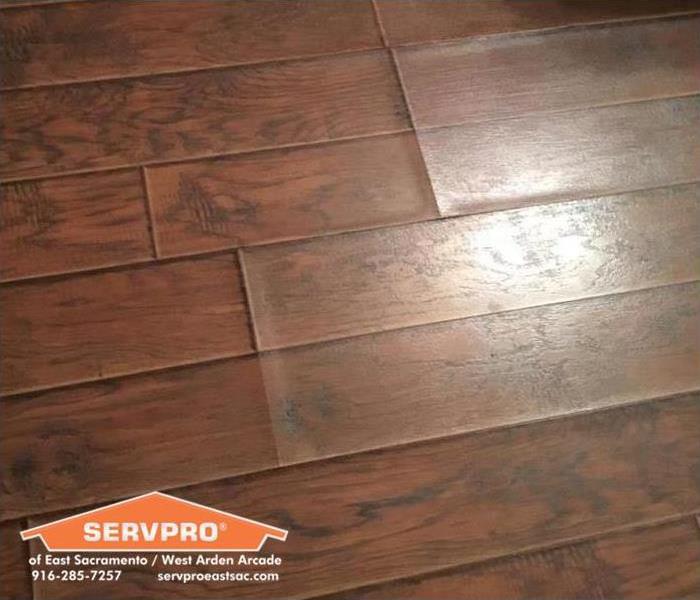Water Damage on Hardwood Floors
2/5/2018 (Permalink)
Wood naturally contains moisture, although the porous nature of wood will cause it to absorb more moisture when it encounters water. The nature of wood causes it to expand when it absorbs this excess moisture, and sometimes the wood can warp. These expanded boards may push against each other and buckle where the boards meet and may become permanent after the wood dries. Floors must be replaced if proper drying and refinishing cannot remove the damage.
Cupping and Crowning
Cupping occurs when water is absorbed from the sides and bottom of the wood. This normally happens when water pools underneath the wood during a water loss. The edges will slightly raise or “cup.” Cupping can often be sanded out.
Crowning occurs when the top of the wood holds more moisture than the sides and the bottom of the wood. This makes the wood arch or create a bowed shape in the middle. Most of the time you cannot sand out crowned flooring.
What to do?
Water on hardwood floors should be extracted immediately to prevent further damage. Wet carpets and pads over hardwood floors should be removed. Finished wood flooring may sometimes return to its original shape and be restored. It is important to utilize proper drying techniques with air movers and dehumidifiers to give the best conditions for restoration.
If your hardwood floors have been affected by water damage, give the pros a call at 916-285-7257! We would be happy to check it out for you.
Note: Only hardwood floors affected by clean water should be restored. If your hardwood floor was affected by contaminated water, it should be removed by a professional. For more information on what to do when your home is damaged by contaminated water, click here.




 24/7 Emergency Service
24/7 Emergency Service
